The state of Florida is home to around 60 different spider species, with less than ten of these being venomous. One of the most common spiders in Florida is the brown spider – a rather broad term that can refer to anyone out of dozens of species. Some brown spiders in Florida can be venomous, including the brown recluse, but not all are.
Ready to learn more about the different types of brown spiders in Florida? Let’s dive in!
Wolf Spider

The dotted wolf spider possesses highly reflective eyes.
©HWall/Shutterstock.com
Wolf spiders are spiders in the family Lycosidae, which comes from the Greek word for “wolf.” Unlike other spiders, which rely on webs or traps to catch their prey, the wolf spider, like its namesake, hunts down their prey. They may also rely on surprise attacks through ambushes, either by taking advantage of a random opportunity or by waiting at the mouth of their burrows.
Two of the wolf spider’s eyes are larger than the other six, and they carry their egg sacs on their back. These unique facts help set them apart from other brown spiders in Florida.
Unique to only a handful of other spiders, wolf spiders have reflector tissue in their eyes, just like cats or dogs. This means that if you were to shine your flashlight over your grass in the warmer months, you may be able to spot them looking back at you! They also have excellent eyesight, which can be rare in spiders.
While wolf spiders are venomous, they don’t usually pose a threat to humans. Usually, their bite just results in a mild allergic reaction.
Brown Recluse
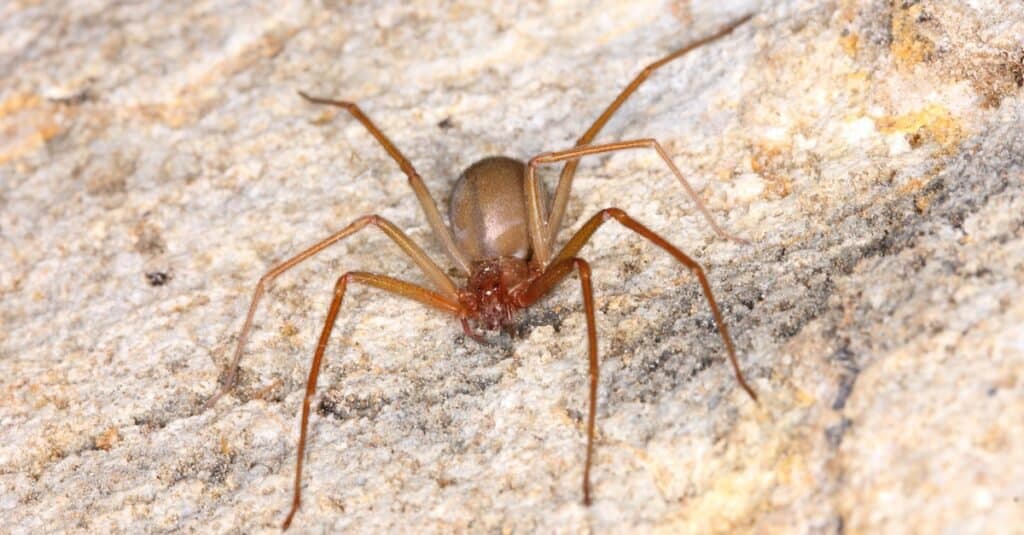
The brown recluse spider is one of the most dangerous spiders in the United States.
©Pong Wira/Shutterstock.com
The brown recluse (Loxosceles reclusa), however, is a highly venomous spider – one that poses a significant medical risk. In fact, they’re one of only three spiders in North America that pose a medical significance and one of the only brown spiders in Florida you truly need to worry about. However, even then, only around 10 percent of their bites are truly serious.
Despite their intimidating reputation, brown recluses are actually quite small spiders. You’ll usually find them less than an inch long, though so many are as small as half an inch. You can easily identify them by the violin-shaped pattern on their back. This shape has earned them many nicknames, including the fiddleback spider, brown fiddler, or violin spider.
Cellar Spider
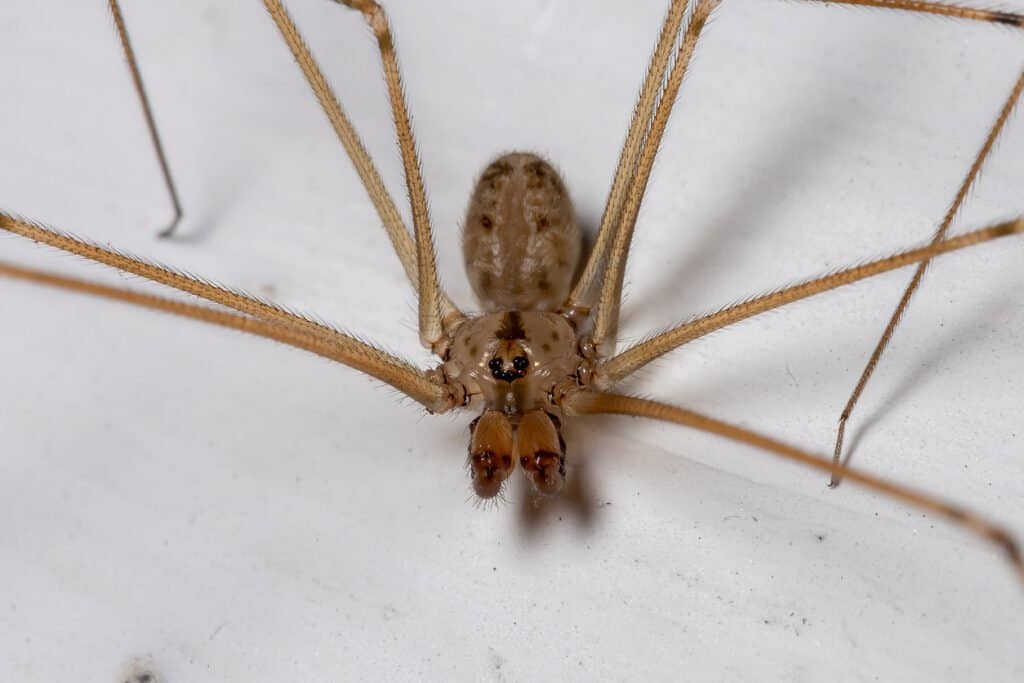
Cellar spiders are also known as “daddy longlegs.”
©iStock.com/ViniSouza128
You may recognize these unique spiders as “daddy longlegs.” Found in a wide variety of habitats and areas, cellar spiders are a common sight, and they’re one of the most common brown spiders in Florida.
You may have heard the myth that cellar spiders have the deadliest venom on the planet – and it’s not exactly true. While they have venom, it’s weaker and solely for paralyzing their prey, including small insects. Even if cellar spiders were interested in biting humans, their mouths would be too tiny to do so!
Cellar spiders, like other spiders, can be beneficial to keep around. They can help control pests and will even reduce the population of other more dangerous spiders that might come around.
Huntsman Spider
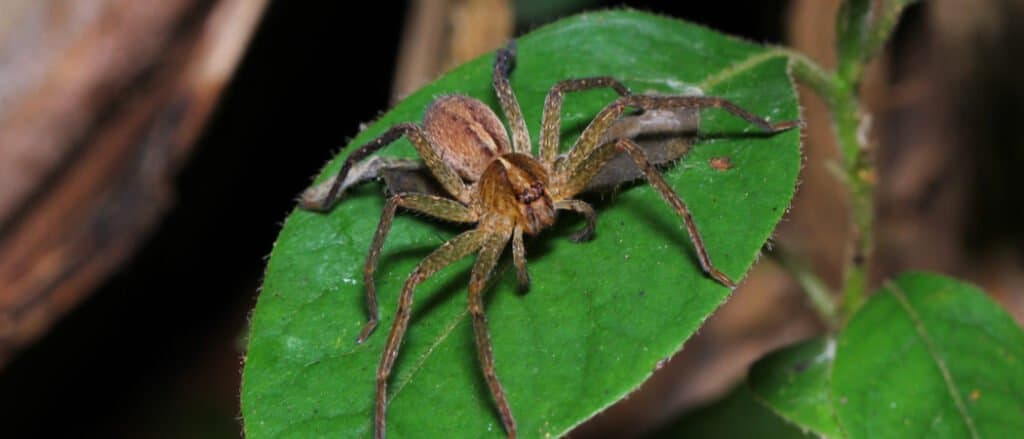
Huntsman spider can grow to have a legspan of 12 inches.
©Pong Wira/Shutterstock.com
If you were to stumble across the huntsman spider, you may think it’s one of the most dangerous brown spiders in Florida. After all, it’s a rather fierce spider that can grow to have a leg span of nearly 12 inches, depending on the species.
Plus, there’s a common misconception that huntsman spiders have a deadly venom. While’s there some truth to it – they are venomous spiders – they usually only cause a mild allergic reaction in humans.
While their backs may be brown, which has earned them a spot on this list, their bellies can be different colors. One of the most common stomach color patterns in huntsman spiders is a black and white combination.
Six-spotted Fishing Spider
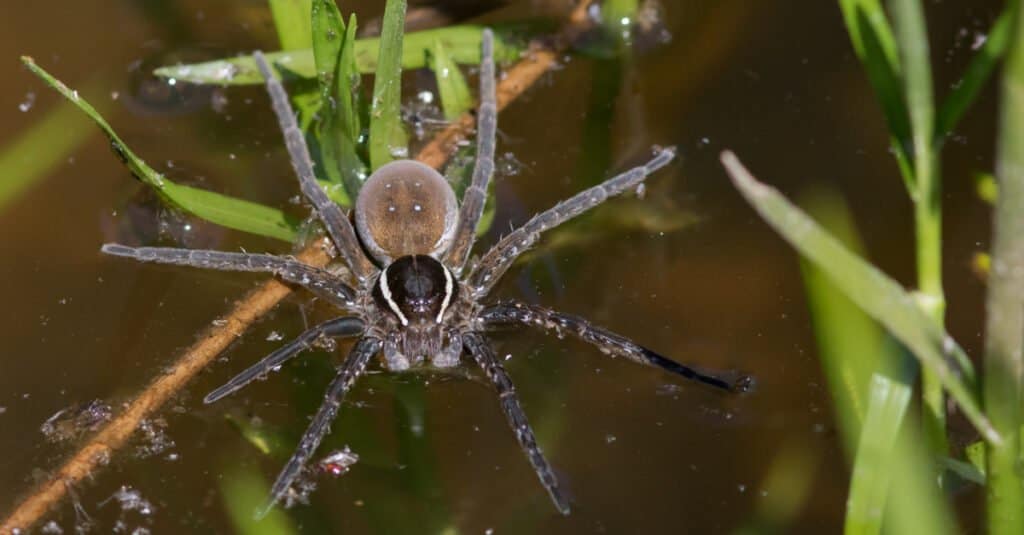
The six-spotted fishing spider has cream-colored markings on its back.
©Frode Jacobsen/Shutterstock.com
If you’ve ever seen a spider seemingly walking on water, you might have seen the six-spotted fishing spider. These brown spiders in Florida are known for living by bodies of water where they can be seen floating on top.
Female six-spotted fishing spiders are larger than males, and when you include their legs, they can grow to be nearly three inches long. While they’re similar to other fishing spiders and brown spiders in Florida, you can identify them by the cream-colored spots on their backs.
While they don’t use webs for hunting like other spiders might, they do use their silk for other tasks. This can include finding a mate.
Brown Widow Spider

The brown Widow spider has bright red hourglass marking.
©Decha Thapanya/Shutterstock.com
The brown widow spiders are invasive species found in several parts of the United States, including Florida. These arachnids are very similar to their iconic red-and-black cousins.
However, their most notable difference is their coloration. The brown widow spider is a brown spider in Florida, and instead of a bright red hourglass marking, they have an orange one. They also may have beige-colored legs with dark bandings.
While the venom of a brown widow is significantly weaker than the black widow’s, it can still be dangerous. This is true for animals and humans.
Nursery Web Spider
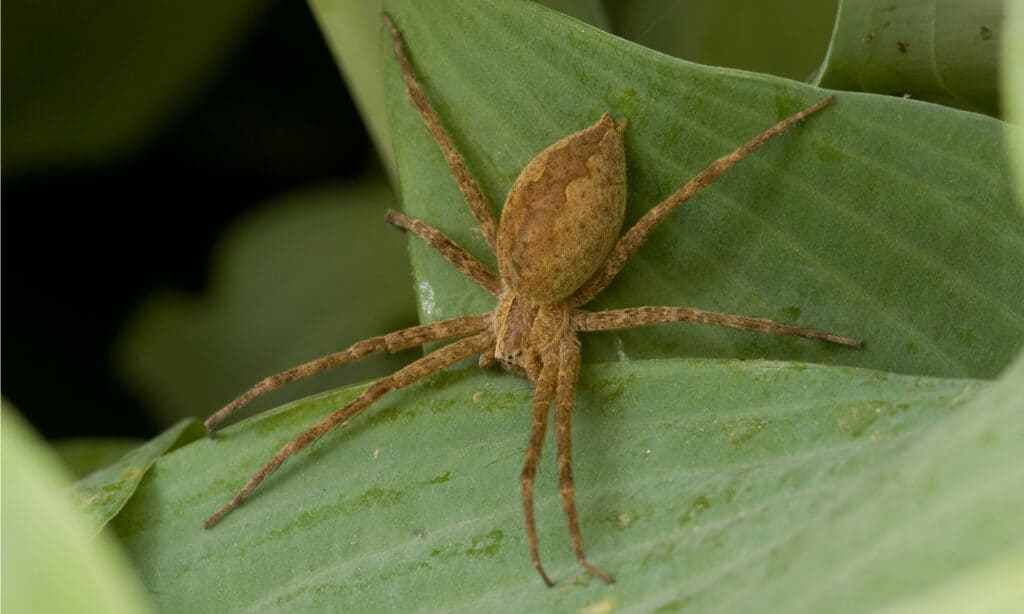
Nursery web spiders tie females’ legs during mating to avoid being eaten afterward.
©SDeming/Shutterstock.com
At a glance, the nursery web spider greatly resembles the wolf spider. This is because they are distantly related. However, while both are still large brown spiders in Florida, the nursery web spider still has a few unique characteristics.
First, all of their eyes are around the same size. The wolf spider has a single pair of large eyes, and then the rest of its eyes are smaller. Nursery web spiders also have a powerful venom. While it’s not enough to affect humans or large mammals like our cats and dogs, they can hunt insects, invertebrates, and even small fish!
The photo featured at the top of this post is © © 2017 Jee & Rani Nature Photography / CC BY-SA 4.0 via Wikimedia Commons – License / Original
Thank you for reading! Have some feedback for us? Contact the AZ Animals editorial team.






